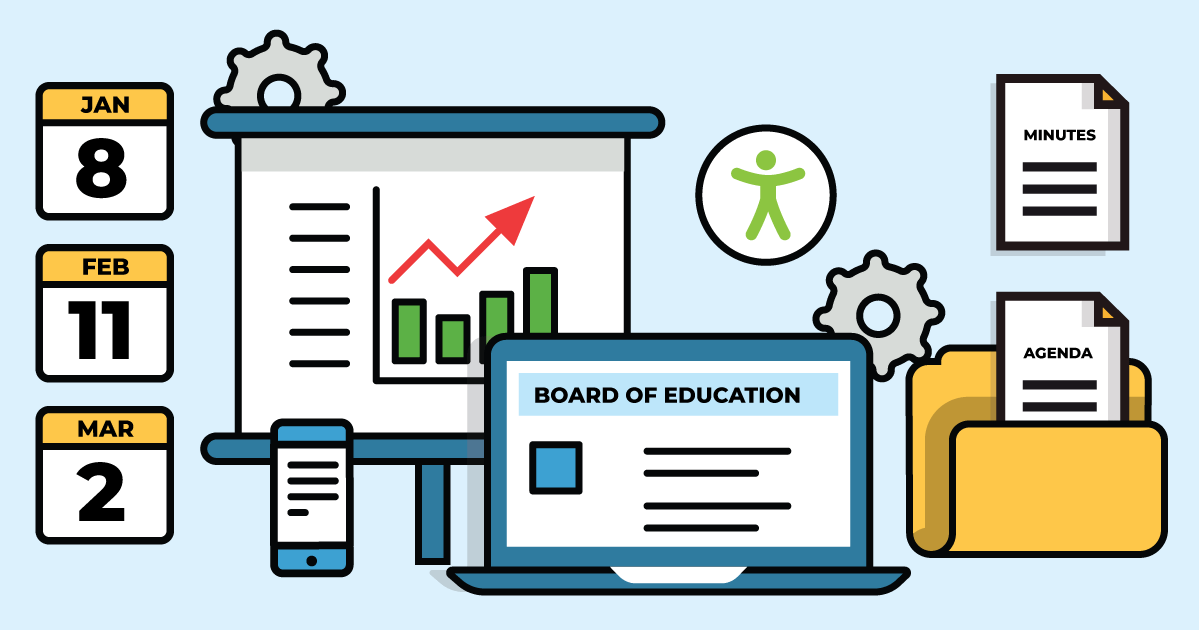“Share content and create meaningful dialogue with parents, students, staff and the community to improve communications and support the educational goals of the school.”
School Social Media Guide
Explore the chapters:
Creating an effective social media program for your school or district requires putting in place a strong foundation that starts with a commitment to making it work, and ends with dynamic engagement that can truly change education outcomes.
In this chapter, learn how to create a mission statement, put policies in place, and empower your school communicators to establish a framework that will have your entire school community embracing the power of social media.
It all starts with a mission. Just as your school has a mission, your school’s social media program needs one to reflect what it is you’re trying to accomplish. Social engagement is far from passive, so it’s important you create the anchor message that will serve to capture – in as few words as possible without sacrificing substance – the essence of your school’s vision for engaging your entire school community.
Your school’s social media mission statement is especially important given it's is a public articulation that your school is embracing this media. That is, you're not running from it, as many schools still do.
Social media’s ubiquitous nature requires schools act sooner than later on setting out on their mission to incorporate social media into the broader communications landscape. A well-tuned social media mission statement goes a long way in assuaging your district’s stakeholders – the school board, staff, students, parents, and the entire school community – that you’re on the right track to engaging your constituents for the good of students and the community.
While developing your social media mission statement needn’t be a long and tedious task, it requires the diligence to align your social media goals with those of your school or district. Typically, you’re school’s communications team – public relations director, even outside PR or communications counsel – should drive the creation, approval and promotion of your social media mission.
Here’s an example of a social media mission statement. Feel free to use it as a starting point for your school:

“Share content and create meaningful dialogue with parents, students, staff and the community to improve communications and support the educational goals of the school.”
When you build your school or district’s social media program, make sure you structure it to reflect how you want to organize and manage your social media content. For example, does each school have its own social media profile, or are you creating just district-level profiles?
Social media is all about ‘personalization’ after all, so you and your school have to determine how individual schools’ social media brands will be
balanced with the overarching district brand, or the football team’s social media brand is depicted within the school brand. Balancing uniformity and personalization can be a tricky task, but with the right structure in place, it’s easy.
Tips for creating school profiles:
Many school communications plans ironically neglect – if not totally overlook – the role students can play in delivering messaging. They are all about sharing. Be sure to factor them into your communications mix. Find some student ambassadors who can haul the load when it comes to sharing your school stories.
Reaching your entire school community in today’s digital, mobile world requires a mindset, strategic approach and the tools to connect how and when your audiences prefer.
Taking an active role in your school’s social media gives you the ability to tell everybody about all the great things happening in and around your school. Schools will forever be associated with being a cornerstone of the community, so telling your school’s story – putting your best foot forward – helps position it as a community asset for educating future generations.
But much more than just telling your story, it’s about listening and sharing like never before, and joining in the kind of dialogue that brings everyone closer to your school.
We all know how important listening is in the communications process. And creating better ways to listen is an important benefit of a social media program that helps strengthen the family-school-community partnership. All the social media channels and the mobile, 24-hour access to them give teachers, school administrators and all your school’s stakeholders so many more chances to learn more about the issues percolating among parents and the school community.
The ability to create online surveys in an instant, and just as instantly know where your audience stands on any number of school issues, facilitates immediacy in gauging opinion, gathering input, and simply listening better. Tools to monitor what’s being said about your school – and who’s saying it – creates untold opportunities to not only listen, but respond strategically with the right message.
Time was, a news release sent to the local press or a posting on the school website was the primary way to get the broadest reach for school news – create the release and hope parents and the rest of the community finds it. Post and pray. If you’re real lucky and your public relations or communications manager has a good rapport with the local media, the community paper picked up the release and ran the story. Social media changes all that.
While social media best practices can do wonders to strengthen your school’s media relations, it’s a powerful tool in and of itself, enabling you to publish and share while maintaining the utmost of editorial control. You manage the message.
Social media is multi-faceted in that it can be used to do much more than deliver messages. It can be used to galvanize your audience and build a following in and of itself. It can also be used to drive traffic to your website – or elsewhere – through the use of embedded links, giving your audiences more chances to learn more and get closer to your school.
These vehicles and others can be utilized to surround your audiences with messaging and create nearly endless opportunities to start one-on-one and one-to-many dialogue.
Social media creates personal and responsive conversations with all your audiences – parents, staff, students and the community – and helps strengthen your school’s image and place in the community.

Social media can surround your audiences with messaging and create opportunities to start one-on-one and one-to-many dialogue.
Explore the chapters:
Contact SchoolNow
Get a personalized demo.
If you want to see SchoolNow in action or just want to learn more, let us know.

© 2023 SchoolNow. All Rights Reserved.